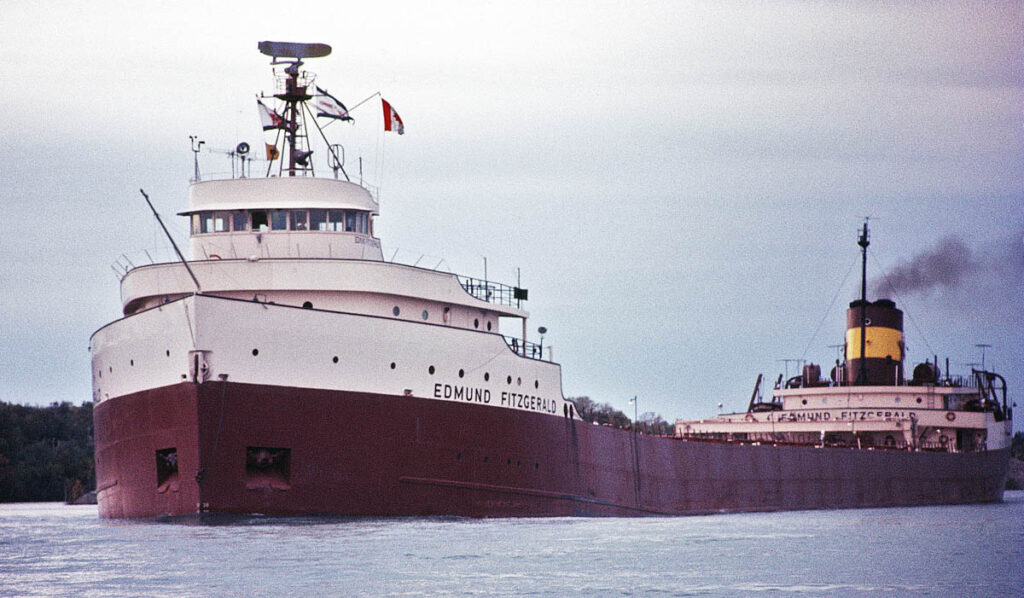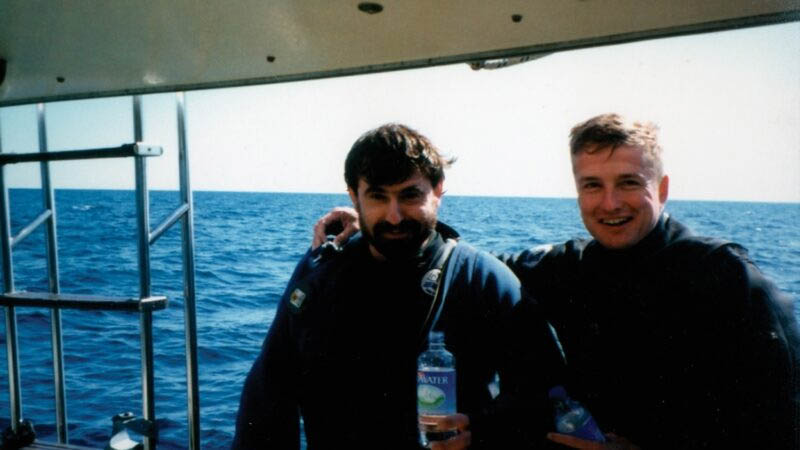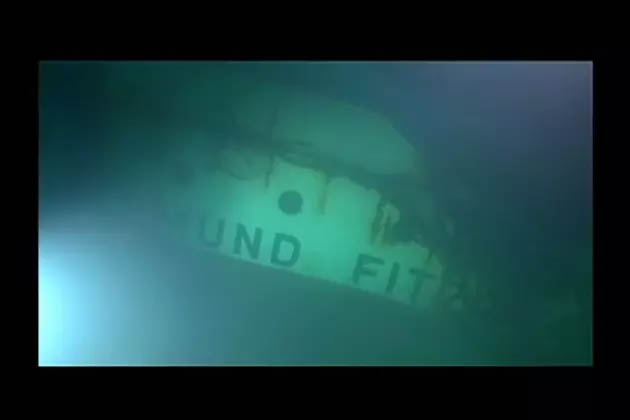The year 2025 marks the 50th anniversary of the sinking of the Edmund Fitzgerald, a tragedy that remains one of the most well-known shipwrecks on the Great Lakes. The Fitzgerald is often the first vessel people think of when discussing maritime disasters in the region, largely due to Gordon Lightfoot’s haunting ballad, The Wreck of the Edmund Fitzgerald. The song became a major hit, reaching #1 in Canada and #2 in the United States. Lightfoot was moved to write the song after noticing that Newsweek magazine had misspelled the ship’s name as “Edmond” in an article two weeks after the sinking—a mistake he felt disrespected the memory of the 29 crew members who lost their lives.
In 1975, my grandfather—who had once worked as a wheelsman on a Great Lakes freighter—was retired and living near the St. Clair River. He spent much of his time in retirement watching ships pass by, heading to and from the upper lakes. That year, he saw the Edmund Fitzgerald make its way north past Mooretown, Ontario. It was a sight like any other at the time, but what made it unforgettable was the fact that the Fitzgerald never came back.
Ernest M. McSorley (September 29, 1912 – November 10, 1975) was the final captain of the SS Edmund Fitzgerald, and he, along with all 28 crew members, tragically lost his life when the ship sank on November 10, 1975.
The Edmund Fitzgerald departed from Superior, Wisconsin, at 2:15 p.m. on November 9, 1975, under Captain McSorley’s command. She was bound for a steel mill on Zug Island near Detroit, Michigan, carrying 26,116 long tons of taconite iron ore pellets. After departure, the freighter quickly reached her cruising speed of 16.3 mph (14.2 knots).
Later that afternoon, around 5 p.m., the Fitzgerald was joined by a second freighter, the Arthur M. Anderson, captained by Jesse B. “Bernie” Cooper. The Anderson had departed from Two Harbors, Minnesota, and was en route to Gary, Indiana.
Read The Scuba News Canada Article on the Arthur M. Anderson
At the time, the weather forecast issued by the National Weather Service was not out of the ordinary for a November crossing. The initial prediction called for a storm to pass south of Lake Superior by the morning of November 10. However, as the hours passed, the conditions on the lake worsened dramatically—setting the stage for one of the most tragic maritime disasters in Great Lakes history. In the early hours of November 10, at 2:00 a.m., the National Weather Service upgraded its advisory from a gale warning to a storm warning, forecasting wind speeds between 35 and 50 knots (40–58 mph or 65–93 km/h). Up to that point, the Edmund Fitzgerald had been trailing behind the Arthur M. Anderson, which maintained a steady pace of 14.6 miles per hour (12.7 knots). However, around 3:00 a.m., the Fitzgerald, being the swifter vessel, overtook the Anderson.
As the storm system moved across Lake Superior, both ships experienced fluctuating wind directions—shifting from the northeast to the south and eventually to the northwest—which temporarily caused wind speeds to drop. But by 1:50 p.m., the Arthur M. Anderson recorded sustained winds of 50 knots (58 mph or 93 km/h). Shortly after, at 2:45 p.m., snow began to fall heavily, drastically reducing visibility. At that point, the Fitzgerald was approximately 16 miles (26 kilometers) ahead, and the Anderson lost visual contact with her.
Around 7:10 p.m., the Arthur M. Anderson radioed the Edmund Fitzgerald to alert them of a vessel heading north and inquired about their status. Captain McSorley replied with what would be his final words: “We are holding our own.” After that, there was no further communication. The Fitzgerald never sent out a distress signal, and within ten minutes, the Anderson could no longer reach her by radio or see her on radar.
Despite an extensive search, only debris—such as lifeboats and life rafts—were recovered; none of the 29 crew members were ever found. On its final voyage, the Edmund Fitzgerald carried a full crew that included the captain, three mates (first, second, and third), five engineers, three oilers, a cook, a wiper, two maintenance workers, three watchmen, three deckhands, three wheelsmen, two porters, a cadet, and a steward. Most of the men called Ohio and Wisconsin home. The youngest was 20-year-old watchman Karl A. Peckol, while the oldest was Captain Ernest McSorley, age 63.
The Dive
Before diving to the infamous wreck of the Edmund Fitzgerald was prohibited, two men accomplished what would become the deepest scuba dive to a shipwreck in Great Lakes history. Their daring descent to the lakebed marked a significant moment in underwater exploration, forever tied to the legend of the Fitzgerald.
In 1995, a bold and controversial Michigan-based stunt blended equal parts brilliance and recklessness. Terrence Tysall, a dive instructor from Florida, and Mike Zlatopolsky, a Russian-born thrill-seeker with a taste for danger, made history by becoming the first—and possibly the only—people to physically touch the wreck of the Edmund Fitzgerald since it vanished beneath Lake Superior’s surface in 1975.
In 1995, Terrence Tysall and Mike Zlatopolsky quietly traveled to Michigan’s Upper Peninsula and carried out what remains the only scuba dive ever made to the wreck of the Edmund Fitzgerald. It was an extraordinary and perilous achievement. The pair descended an incredible 530 feet into the near-freezing, 36-degree waters of Lake Superior—a depth rarely attempted by divers. With a gloved hand, they touched the ship’s rail, marking a moment no one has repeated since.
Before attempting the dive, both men trained with deeper practice dives to prepare for the extreme conditions. The Fitzgerald rests in two pieces at the bottom of the lake: the bow lies upright, embedded in the lakebed, while the stern came to rest upside down—silent remnants of one of the Great Lakes’ most haunting tragedies. Added together, their time for descent and on the Fitzgerald was less than 13 minutes. Their return to the surface would take three hours and 15 minutes.
At the time of their dive in 1995, there were no laws or regulations specifically prohibiting access to the Edmund Fitzgerald, which rests in Canadian waters. As a result, Tysall and Zlatopolsky needed no formal permission to carry out their expedition. It wasn’t until 2006—over a decade later—that the Canadian government enacted legislation to protect the Fitzgerald and restrict access to the site. There is a One Million Dollar fine for diving it. That same law also included protections for two other historically significant shipwrecks located in Lake Ontario.
Every year on November 10th ::: A yearly event honors the sinking of the freighter Edmund Fitzgerald and the tragic loss of all 29 crew members. It also serves as a moment of remembrance for all those who have lost their lives on the Great Lakes.
As we observe the 50th anniversary in 2025, memorials across the region from Whitefish Point to Detroit will honor the lives lost and the enduring legacy of the Edmund Fitzgerald.
The Great Lakes—a group of five interconnected freshwater lakes in North America—have been navigated since at least the 1600s. Over the centuries, thousands of vessels have sunk while crossing these often treacherous waters. Because many of these wrecks were never recovered or recorded, the total number remains uncertain. According to the Great Lakes Shipwreck Museum, approximately 6,000 ships and 30,000 lives have been lost. However, historian and sailor Mark Thompson suggests the real number of shipwrecks could exceed 25,000. One particularly hazardous region, near Whitefish Point, has seen at least 240 shipwrecks between the loss of the Invincible in 1816 and the sinking of the Edmund Fitzgerald in 1975.
This disaster prompted revisions to Great Lakes shipping regulations, introducing new requirements for safety gear, vessel inspections, freeboard standards, survival suits, and ballast water management.
THE SCUBA NEWS Link !
DemirHindiSG 24 Ekim 2025-22:32









